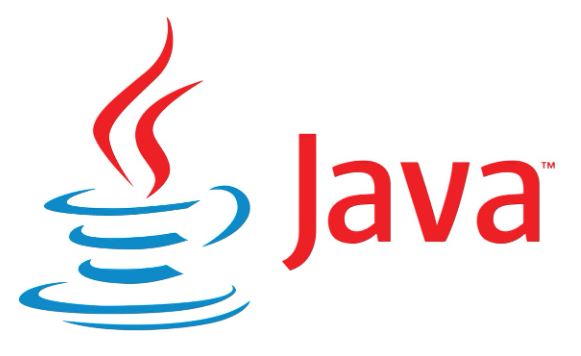Java中的设计模式应用与最佳实践
在Java开发中,设计模式是构建高效、可维护、可扩展软件的重要工具。通过合理地应用设计模式,我们可以优化代码结构,提高开发效率并降低未来维护的复杂性。本文将深入探讨Java中的设计模式,介绍一些常见的设计模式,并提供相关的最佳实践。
设计模式概述
设计模式(Design Pattern)是为了解决软件设计中常见问题而总结出来的解决方案。这些问题通常是某种架构问题、结构问题或行为问题。设计模式并不是直接的代码,而是通过约定俗成的方式提供了一个解决方案的模板。
设计模式大致可以分为三大类:
- 创建型模式:涉及对象的创建,解决对象创建过程中的问题,如性能问题、系统复杂性等。
- 结构型模式:关注如何组织类或对象,使其具有良好的结构,以便于灵活扩展。
- 行为型模式:定义了对象间的通信和职责划分,主要解决对象交互的问题。
常见设计模式及其应用
1. 单例模式(Singleton Pattern)
单例模式确保一个类只有一个实例,并提供全局访问点。它广泛应用于日志记录器、配置管理器等需要全局共享的资源。
代码示例:
public class Singleton {// 使用volatile保证多线程可见性private static volatile Singleton instance;private Singleton() {// 防止反射攻击if (instance != null) {throw new IllegalStateException("Instance already created!");}}public static Singleton getInstance() {if (instance == null) {synchronized (Singleton.class) {if (instance == null) {instance = new Singleton();}}}return instance;}
}
最佳实践:
- 使用双重检查锁定(Double-Checked Locking)来提高效率。
- 确保反射时防止创建多实例。
- 使用
volatile关键字来确保多线程环境下的可见性。
2. 工厂模式(Factory Pattern)
工厂模式提供了一种创建对象的方式,允许子类决定实例化哪个类。它帮助我们将对象的创建逻辑从客户端代码中解耦出来。
代码示例:
// 抽象产品
interface Product {void use();
}// 具体产品
class ConcreteProductA implements Product {public void use() {System.out.println("Using Product A");}
}class ConcreteProductB implements Product {public void use() {System.out.println("Using Product B");}
}// 抽象工厂
interface Factory {Product createProduct();
}// 具体工厂
class FactoryA implements Factory {public Product createProduct() {return new ConcreteProductA();}
}class FactoryB implements Factory {public Product createProduct() {return new ConcreteProductB();}
}public class FactoryPatternTest {public static void main(String[] args) {Factory factoryA = new FactoryA();Product productA = factoryA.createProduct();productA.use();Factory factoryB = new FactoryB();Product productB = factoryB.createProduct();productB.use();}
}
最佳实践:
- 使用工厂方法代替直接调用构造函数,以解耦对象的创建过程。
- 工厂模式在对象较多且有不同变体时,尤其有效。
3. 策略模式(Strategy Pattern)
策略模式定义了一系列算法,并将每一个算法封装起来,使得它们可以互相替换。策略模式让算法的变化独立于使用算法的客户。
代码示例:
// 策略接口
interface Strategy {int execute(int a, int b);
}// 具体策略
class AddStrategy implements Strategy {public int execute(int a, int b) {return a + b;}
}class SubtractStrategy implements Strategy {public int execute(int a, int b) {return a - b;}
}class MultiplyStrategy implements Strategy {public int execute(int a, int b) {return a * b;}
}// 环境类
class Context {private Strategy strategy;public Context(Strategy strategy) {this.strategy = strategy;}public int executeStrategy(int a, int b) {return strategy.execute(a, b);}
}public class StrategyPatternTest {public static void main(String[] args) {Context context = new Context(new AddStrategy());System.out.println("Addition: " + context.executeStrategy(3, 2));context = new Context(new SubtractStrategy());System.out.println("Subtraction: " + context.executeStrategy(3, 2));context = new Context(new MultiplyStrategy());System.out.println("Multiplication: " + context.executeStrategy(3, 2));}
}
最佳实践:
- 策略模式用于不同的行为(算法)之间的替换,避免了大量的条件语句。
- 将变动的部分提取成策略接口,而将不变的部分提取到上下文类中。
4. 观察者模式(Observer Pattern)
观察者模式是一种行为型设计模式,允许一个对象(被观察者)向多个依赖对象(观察者)发布更新。它常用于事件驱动的系统中。
代码示例:
import java.util.ArrayList;
import java.util.List;// 观察者接口
interface Observer {void update(String message);
}// 具体观察者
class ConcreteObserver implements Observer {private String name;public ConcreteObserver(String name) {this.name = name;}@Overridepublic void update(String message) {System.out.println(name + " received message: " + message);}
}// 被观察者
class Subject {private List<Observer> observers = new ArrayList<>();public void addObserver(Observer observer) {observers.add(observer);}public void removeObserver(Observer observer) {observers.remove(observer);}public void notifyObservers(String message) {for (Observer observer : observers) {observer.update(message);}}
}public class ObserverPatternTest {public static void main(String[] args) {Subject subject = new Subject();Observer observer1 = new ConcreteObserver("Observer1");Observer observer2 = new ConcreteObserver("Observer2");subject.addObserver(observer1);subject.addObserver(observer2);subject.notifyObservers("Hello Observers!");}
}
最佳实践:
- 观察者模式常用于事件驱动的应用程序,如GUI框架和消息通知系统。
- 要避免过度依赖观察者模式,特别是在不需要多对一或一对多更新的场景中。
设计模式应用的最佳实践
- 遵循开闭原则:设计模式的本质之一是通过可扩展的方式进行架构设计。应用设计模式时,要确保系统能够在不修改现有代码的情况下扩展功能。
- 避免滥用设计模式:虽然设计模式可以提高代码的灵活性,但不应过度使用。在简单的场景下,可能不需要复杂的设计模式实现。
- 注重代码可读性和维护性:设计模式的核心目的是使代码更加清晰和易于维护。在应用设计模式时,不要牺牲代码的可读性和简洁性。
- 考虑性能影响:某些设计模式,如单例模式,可能会带来性能瓶颈,尤其是在多线程环境下。一定要权衡性能和设计的复杂性。
5. 装饰者模式(Decorator Pattern)
装饰者模式是一种结构型设计模式,它允许通过将对象放入多个装饰类中来动态地给一个对象添加额外的功能,而不改变其结构。它通常用于需要增强功能的类,但又不希望使用子类化的方式。
代码示例:
// 抽象组件
interface Coffee {double cost();
}// 具体组件
class SimpleCoffee implements Coffee {@Overridepublic double cost() {return 5.0;}
}// 抽象装饰者
abstract class CoffeeDecorator implements Coffee {protected Coffee coffee;public CoffeeDecorator(Coffee coffee) {this.coffee = coffee;}@Overridepublic double cost() {return coffee.cost();}
}// 具体装饰者
class MilkDecorator extends CoffeeDecorator {public MilkDecorator(Coffee coffee) {super(coffee);}@Overridepublic double cost() {return coffee.cost() + 1.5;}
}class SugarDecorator extends CoffeeDecorator {public SugarDecorator(Coffee coffee) {super(coffee);}@Overridepublic double cost() {return coffee.cost() + 0.5;}
}public class DecoratorPatternTest {public static void main(String[] args) {Coffee coffee = new SimpleCoffee();System.out.println("Cost of simple coffee: " + coffee.cost());coffee = new MilkDecorator(coffee);System.out.println("Cost of coffee with milk: " + coffee.cost());coffee = new SugarDecorator(coffee);System.out.println("Cost of coffee with milk and sugar: " + coffee.cost());}
}
最佳实践:
- 装饰者模式非常适合在运行时动态地为对象添加功能。
- 不要过度使用装饰者模式,否则会导致代码难以理解和维护,尤其是当装饰链过长时。
6. 适配器模式(Adapter Pattern)
适配器模式允许将一个接口转换成客户希望的另一个接口。它主要用于解决接口不兼容的问题,通常应用于不同类之间的协作时。
代码示例:
// 目标接口
interface MediaPlayer {void play(String audioType, String fileName);
}// 适配者接口
interface MediaAdapter {void play(String fileName);
}// 具体类
class AudioPlayer implements MediaPlayer {MediaAdapter mediaAdapter;@Overridepublic void play(String audioType, String fileName) {// 支持MP3格式if(audioType.equalsIgnoreCase("mp3")){System.out.println("Playing mp3 file: " + fileName);}// 支持VLC和MP4格式else if(audioType.equalsIgnoreCase("vlc") || audioType.equalsIgnoreCase("mp4")){mediaAdapter = new MediaAdapterImpl(audioType);mediaAdapter.play(fileName);}else{System.out.println("Invalid media type: " + audioType);}}
}// 适配器实现
class MediaAdapterImpl implements MediaAdapter {private String audioType;public MediaAdapterImpl(String audioType) {this.audioType = audioType;}@Overridepublic void play(String fileName) {if(audioType.equalsIgnoreCase("vlc")){System.out.println("Playing VLC file: " + fileName);}else if(audioType.equalsIgnoreCase("mp4")){System.out.println("Playing MP4 file: " + fileName);}}
}public class AdapterPatternTest {public static void main(String[] args) {AudioPlayer audioPlayer = new AudioPlayer();audioPlayer.play("mp3", "beyond the horizon.mp3");audioPlayer.play("mp4", "far far away.mp4");audioPlayer.play("vlc", "mind me.vlc");audioPlayer.play("avi", "unknown.avi");}
}
最佳实践:
- 使用适配器模式时,可以将现有类的接口适配到新的接口,从而实现代码的复用。
- 尽量保持适配器的简洁性,避免一个适配器类过于庞大,导致难以维护。
7. 代理模式(Proxy Pattern)
代理模式是一种结构型设计模式,它为其他对象提供一种代理以控制对该对象的访问。常见的代理模式有远程代理、虚拟代理和保护代理。
代码示例:
// 主题接口
interface Image {void display();
}// 真实主题
class RealImage implements Image {private String fileName;public RealImage(String fileName) {this.fileName = fileName;loadFromDisk();}private void loadFromDisk() {System.out.println("Loading image: " + fileName);}@Overridepublic void display() {System.out.println("Displaying image: " + fileName);}
}// 代理类
class ProxyImage implements Image {private RealImage realImage;private String fileName;public ProxyImage(String fileName) {this.fileName = fileName;}@Overridepublic void display() {if (realImage == null) {realImage = new RealImage(fileName);}realImage.display();}
}public class ProxyPatternTest {public static void main(String[] args) {Image image1 = new ProxyImage("test1.jpg");image1.display(); // 将会加载图像并显示System.out.println("");Image image2 = new ProxyImage("test2.jpg");image2.display(); // 仅显示图像}
}
最佳实践:
- 代理模式可以延迟创建真实对象,特别适用于性能优化(如懒加载)和远程通信。
- 在需要控制访问权限、延迟加载或保护资源时,可以使用代理模式。
8. 状态模式(State Pattern)
状态模式允许对象在内部状态改变时改变其行为。该模式常用于有限状态机和工作流系统中,可以帮助简化对象状态的管理。
代码示例:
// 状态接口
interface State {void doAction(Context context);
}// 具体状态类
class StartState implements State {@Overridepublic void doAction(Context context) {System.out.println("Player is in start state");context.setState(this);}@Overridepublic String toString() {return "Start State";}
}class StopState implements State {@Overridepublic void doAction(Context context) {System.out.println("Player is in stop state");context.setState(this);}@Overridepublic String toString() {return "Stop State";}
}// 上下文类
class Context {private State state;public Context() {state = null;}public void setState(State state) {this.state = state;}public State getState() {return state;}
}public class StatePatternTest {public static void main(String[] args) {Context context = new Context();StartState startState = new StartState();startState.doAction(context);System.out.println("Current State: " + context.getState());StopState stopState = new StopState();stopState.doAction(context);System.out.println("Current State: " + context.getState());}
}
最佳实践:
- 状态模式非常适用于需要处理复杂状态转移的场景,尤其是在行为变化与状态紧密相关的系统中。
- 在实现时,要避免状态过多,导致状态机管理复杂。
9. 命令模式(Command Pattern)
命令模式将请求封装成一个对象,从而让我们通过参数化对象来传递请求。它可以解耦发送请求的对象和接收请求的对象,常用于实现Undo/Redo功能和事务系统。
代码示例:
// 命令接口
interface Command {void execute();
}// 具体命令类
class LightOnCommand implements Command {private Light light;public LightOnCommand(Light light) {this.light = light;}@Overridepublic void execute() {light.turnOn();}
}class LightOffCommand implements Command {private Light light;public LightOffCommand(Light light) {this.light = light;}@Overridepublic void execute() {light.turnOff();}
}// 接收者
class Light {public void turnOn() {System.out.println("Light is ON");}public void turnOff() {System.out.println("Light is OFF");}
}// 请求发起者
class RemoteControl {private Command command;public void setCommand(Command command) {this.command = command;}public void pressButton() {command.execute();}
}public class CommandPatternTest {public static void main(String[] args) {Light light = new Light();Command lightOn = new LightOnCommand(light);Command lightOff = new LightOffCommand(light);RemoteControl remoteControl = new RemoteControl();remoteControl.setCommand(lightOn);remoteControl.pressButton();remoteControl.setCommand(lightOff);remoteControl.pressButton();}
}
最佳实践:
- 命令模式适用于需要将请求调用者和请求执行者解耦的场景,尤其是在需要支持撤销/重做操作时。
- 在复杂的操作流中,命令模式有助于使代码更易扩展和维护。
随着软件系统的不断发展,设计模式成为了构建高质量、可扩展、易维护软件的基础工具之一。熟练掌握并应用这些设计模式,不仅能让我们在面临复杂问题时有更多的解决方案,也能使我们在团队协作时保持代码的一致性和可读性。在实际开发过程中,选择合适的设计模式将大大提升开发效率和系统的质量。

